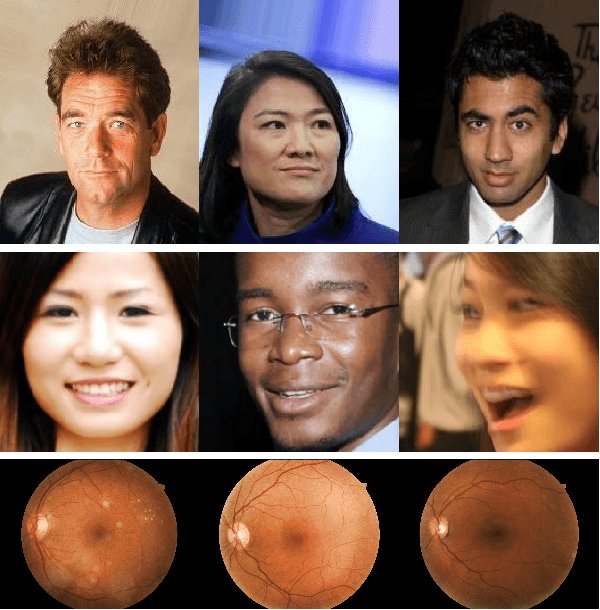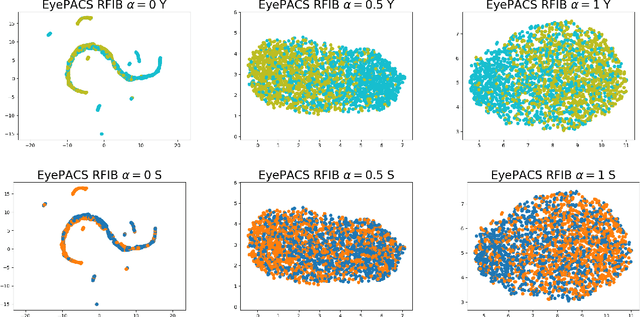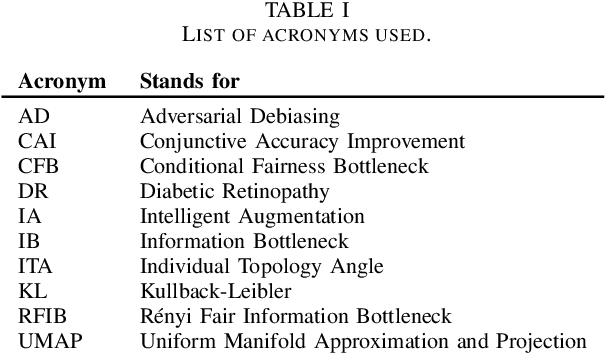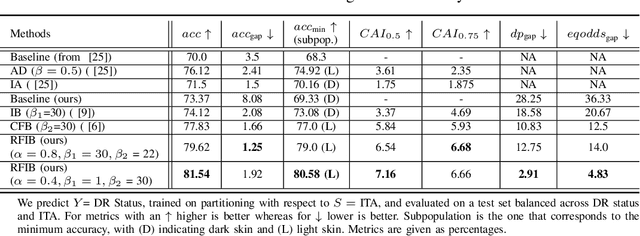Adam Gronowski
Achieving Utility, Fairness, and Compactness via Tunable Information Bottleneck Measures
Jun 20, 2022



Abstract:Designing machine learning algorithms that are accurate yet fair, not discriminating based on any sensitive attribute, is of paramount importance for society to accept AI for critical applications. In this article, we propose a novel fair representation learning method termed the R\'enyi Fair Information Bottleneck Method (RFIB) which incorporates constraints for utility, fairness, and compactness of representation, and apply it to image classification. A key attribute of our approach is that we consider - in contrast to most prior work - both demographic parity and equalized odds as fairness constraints, allowing for a more nuanced satisfaction of both criteria. Leveraging a variational approach, we show that our objectives yield a loss function involving classical Information Bottleneck (IB) measures and establish an upper bound in terms of the R\'enyi divergence of order $\alpha$ on the mutual information IB term measuring compactness between the input and its encoded embedding. Experimenting on three different image datasets (EyePACS, CelebA, and FairFace), we study the influence of the $\alpha$ parameter as well as two other tunable IB parameters on achieving utility/fairness trade-off goals, and show that the $\alpha$ parameter gives an additional degree of freedom that can be used to control the compactness of the representation. We evaluate the performance of our method using various utility, fairness, and compound utility/fairness metrics, showing that RFIB outperforms current state-of-the-art approaches.
Renyi Fair Information Bottleneck for Image Classification
Mar 09, 2022

Abstract:We develop a novel method for ensuring fairness in machine learning which we term as the Renyi Fair Information Bottleneck (RFIB). We consider two different fairness constraints - demographic parity and equalized odds - for learning fair representations and derive a loss function via a variational approach that uses Renyi's divergence with its tunable parameter $\alpha$ and that takes into account the triple constraints of utility, fairness, and compactness of representation. We then evaluate the performance of our method for image classification using the EyePACS medical imaging dataset, showing it outperforms competing state of the art techniques with performance measured using a variety of compound utility/fairness metrics, including accuracy gap and Rawls' minimal accuracy.
 Add to Chrome
Add to Chrome Add to Firefox
Add to Firefox Add to Edge
Add to Edge